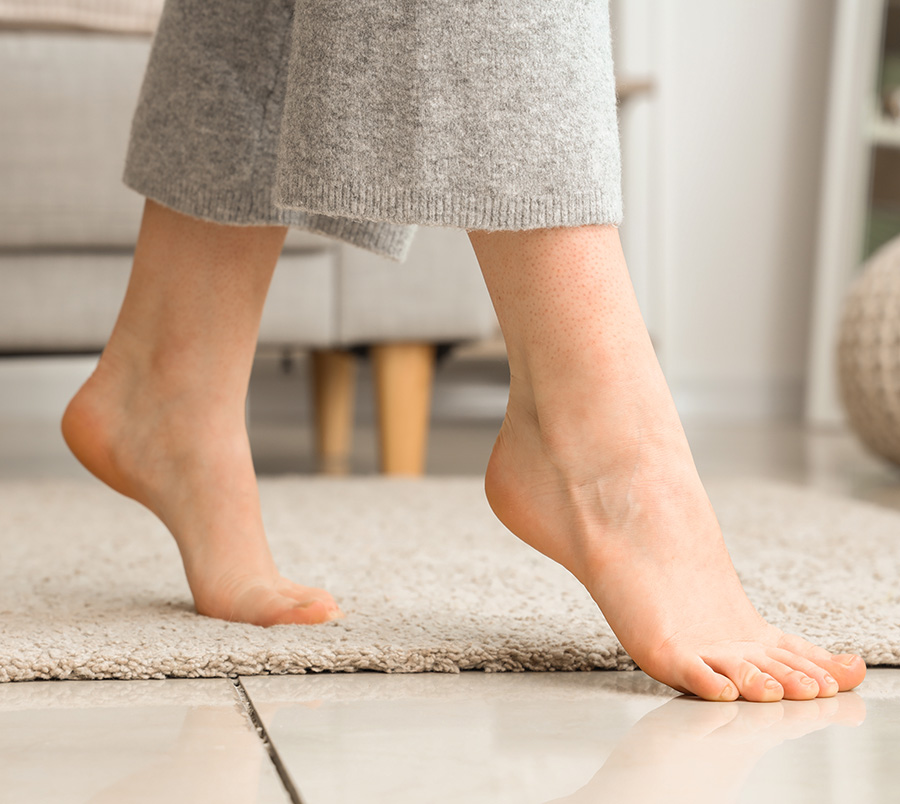Nail Surgery

Why is nail surgery required?
You may be considering having nail surgery on your toes. This document aims to provide a basic guide to the nail surgery procedure, what will happen at your appointment and the follow up care required.
Nail surgery is a simple, outpatient treatment to solve many common nail problems such as:
- Ingrowing Toenails
- Thickened and damaged nails
- Very curved (involuted) nails
This involves taking all or part of the nail away under a local anaesthetic which will numb the toe. A chemical called Phenol may be used to stop the nail regrowing.
Who is nail surgery for?
Nail surgery may not be a viable option for all patients, you will be assessed by the podiatrist and the following considerations will be used to determine your suitability.
We will consider:
- Your medical history and medication
- Any allergies you have
- The circulation in your feet
- If you have had any previous problems with anaesthetics
Your consent to treatment
Part of the assessment involves asking you to consent. If you are under 16 this needs to be given by the person who has parental consent.
What happens on the day?
Our nail surgery is carried out within the usual clinical setting and we allocate around 90 minutes for the whole procedure although this is excessive in time to allow for total focus to be on you as a patient, with all the questions to be answered before the procedure and all relevant paperwork filled in as well as set up and clean down afterwards.
You should have your meals as normal as this will not interfere with the local anaesthetic. It is important that you do not have any other anaesthetic, local or general, in the 24 hours before the nail surgery. You should continue to take any medication prescribed by your GP.
You will need to bring:
- Footwear to accommodate a bulky dressing, an open sandal for example
- Any medication you are currently taking and may require during the day (e.g. any inhalers or GTN spray you are prescribed)
- You will need to arrange transport to and from your appointment as your insurance will not cover you to drive following the anaesthetic
- Light entertainment/distraction (e.g. a magazine, book or music device with headphones at low volume)
- A bottle of water and if appropriate a sugary snack (i.e. a chocolate bar)
The Procedure
A local anaesthetic is injected in to your toe. It works by blocking pain, although you may still feel pressure and movement. It takes about 5 to 10 minutes for the toe to go numb however the clinician may top up anaesthetic as required. We use a ‘sharp or blunt’ test to make sure the area is numb and when we and you are happy that the anaesthetic has worked the procedure can begin:
- A small rubber ring or tourniquet will be placed on the toe
- The nail or part of the nail will be removed
- The chemical (Phenol) is applied
- The tourniquet is then removed and a dressing applied
After the procedure a redressing appointment will be made for you within a week following the operation.
You need to:
- Keep the bandage clean and dry on your toe until you have been instructed to remove it
- Rest with the foot elevated for the rest of the day after surgery
- Avoid any activities that will put pressure on the toe (e.g. sports and tight shoes) until advised otherwise
- Attend your second dressing appointment to allow the podiatrist to monitor your progress
Redressing the toe
At your first review appointment you may be shown how to redress your toe and given a redressing leaflet. The toe must be kept clean, dry and covered with a sterile dressing until it has healed. During this time you will need to avoid tight fitting shoes as this could delay healing. Your podiatrist will advise you on which dressing you will need to buy. Healing usually takes between 6 and 8 weeks, but it can take longer.
Possible Complications
- Injection: There is a small risk of bruising and tenderness at injection sites
- Local Anaesthetic: Complications are rare after a local anaesthetic. An example of a possible complication is an allergic reaction
- Phenol: On rare occasions a reaction to phenol can cause burning or blistering. If this happens it will usually subside in a few days
- Aftercare: Occasionally whilst healing the toe may become infected and a course of antibiotics from your GP may be needed
Whilst every effort will be made to provide a cosmetically acceptable outcome, the final appearance of the toe cannot be guaranteed and there is a very small chance that the nail may regrow.
Surgery taking place at NC Foot Health Clinic Bourne located in North Shoes, 18 North St, Bourne, PE10 9AB 01778 420324
